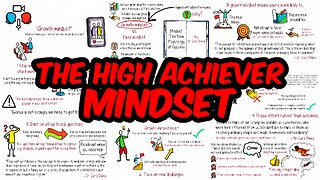Premium Only Content

Journey to Space
https://rumble.com/v3v21xa-before-the-rocket.html
1. Mission Planning and Design:
Mission Objectives: Define the purpose of the mission, whether it's scientific research, technology testing, or other goals.
Mission Duration: Determine how long the mission will last, considering factors like travel time, mission activities, and crew endurance.
Crew Selection: Choose astronauts with the necessary skills and expertise for the mission.
2. Training:
Astronaut Training: As mentioned earlier, astronauts undergo rigorous training to prepare for space travel, including physical fitness, spacecraft systems, spacewalking, and emergency procedures.
3. Spacecraft Preparation:
Spacecraft Build: Construct the spacecraft based on mission requirements. This involves designing, manufacturing, and assembling the spacecraft components.
Integration and Testing: Ensure that all systems work together by integrating and testing the spacecraft in various conditions.
4. Launch:
Pre-launch Preparations: Perform final checks on the spacecraft, load supplies, and prepare the astronauts.
Launch: The spacecraft is launched into space using a rocket. The launch vehicle propels the spacecraft beyond Earth's atmosphere and into orbit.
5. Orbit and Rendezvous:
Orbital Insertion: Once in space, the spacecraft maneuvers to achieve its desired orbit around the Earth or another celestial body.
Rendezvous: If the mission involves docking with another spacecraft or space station, the spacecraft approaches and docks according to a pre-planned schedule.
6. Space Mission Operations:
Living and Working in Space: Astronauts conduct scientific experiments, perform maintenance, and carry out mission objectives.
Communication: Ground control maintains communication with the spacecraft, sending commands and receiving data.
Spacewalks (EVAs): Astronauts may conduct spacewalks to perform repairs or experiments outside the spacecraft or space station.
7. Re-entry and Landing:
Deorbit Burn: The spacecraft begins its descent by firing its engines to slow down and re-enter the Earth's atmosphere.
Re-entry: The spacecraft experiences intense heat during re-entry, and heat shields protect it from burning up.
Parachute Deployment: Parachutes are deployed to slow the spacecraft's descent, ensuring a safe landing.
Splashdown or Landing: The spacecraft lands in the designated recovery area, whether it's on land or in water.
8. Post-Mission Activities:
Recovery: Rescue teams recover the astronauts and the spacecraft.
Data Analysis: Scientists analyze data collected during the mission to achieve mission objectives.
Post-Mission Assessments: Evaluate the success of the mission, including the performance of spacecraft systems and mission objectives.
Throughout this journey, collaboration among astronauts, mission control, engineers, scientists, and various space agencies is crucial to ensure the success and safety of the mission. Each stage involves meticulous planning and execution to overcome the challenges of space travel.
Find your favourite telescope on amazon.
1 - Telescopes
>> https://amzn.to/3FVEqqP
2 - Celestron Telescope
>> https://amzn.to/3QQRZOx
3 - Celestron 8Se
>> https://amzn.to/47vWjIK
-
 LIVE
LIVE
Mally_Mouse
21 hours ago🌶️ 🥵Spicy BITE Saturday!! 🥵🌶️- Let's Play: Tower Unite!
607 watching -
 LIVE
LIVE
FomoTV
4 hours ago🚨 Swamp Theater: FBI Raids Bolton 🕵 Still NO Epstein Files, Trump's Troops & the Red Heifer Hoax 🐂 | Fomocast 08.23.25
75 watching -
 6:04:40
6:04:40
Akademiks
7 hours agoRoc Nation & Meg Thee Stallion did a 7 HOUR Deposition with me. Drake Secret Kid Finally Revealed.
27.7K1 -
 24:19
24:19
Stephen Gardner
3 hours ago🚨BREAKING: FBI Raid of John Bolton’s House Reveals THIS!
29.7K76 -
 8:31
8:31
MattMorseTV
5 hours ago $0.93 earnedTexas just did the IMPOSSIBLE.
27.6K57 -
 24:39
24:39
MYLUNCHBREAK CHANNEL PAGE
1 day agoInterdimensional Beings at Borobudur
38K26 -
 12:42
12:42
Scammer Payback
1 day agoCalling Scammers who were Raided
15.1K10 -
 23:31
23:31
IsaacButterfield
16 hours ago $0.05 earnedThe Woke Mob Is Really CANCELLING Matt Rife For THIS…
16K16 -
 1:23
1:23
WildCreatures
8 days ago $0.98 earnedThis mother armadillo eating her palm nuts is truly adorable
14.4K16 -
 8:59
8:59
The Art of Improvement
11 hours ago $0.02 earnedHow to Build the Most Powerful Mindset for Success
13.1K2